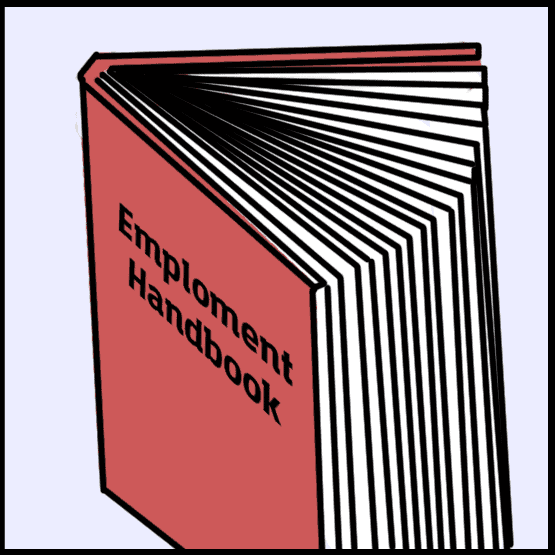Employment Handbooks, why does your small business need one?

The word “handbook” might bring back memories of a little book your high school issued that covered things like the student dress code and grade point averages. Or maybe you remember your Boy Scouts or Girl Scouts handbook, which had everything from how to wear your uniform to how to start a campfire.
But you’re a small business owner, right? You and eight or ten employees you know by name. So why does your small business need an employee handbook? This article is written for someone who isn’t a full-time human resources specialist.
So let’s look at some reasons why an employee handbook can save you a lot of time and grief. We will start with the big one.
Legal liability
Example: Last month you fired an employee because they…
- …brought a loaded gun into the office.
- …told their friends about why a client fired your company.
- …they took 2 hour lunches every day for a month.
- …cursed at a client.
You fired them because they broke the rules…What rules? Are these rules written down anywhere? Now that terminated employee is suing you.
It’d be reassuring to walk into court with your lawyer, and a nice little handbook that states your company’s rules and which one the employee broke. Then you’d have a foundation for your argument. Otherwise, the employee can claim ignorance of the rules, or discrimination on your part.
Non-Discrimination Policies
Discrimination based on age, gender, race, or orientation. Immigration and citizenship issues. Lawsuits are expensive, stressful, and they take time away from running your business. If only you had a book that clearly states your policies on these issues.
Workplace Safety
Don’t forget the other big one–workplace safety. Safety is always a concern, and if an employee is hurt on the job, you may be liable. Did you tell the new hire to wear their hardhat and goggles whenever they’re on the shop floor? Is it in the handbook?
General Workplace Conduct Policies
Besides the scary stuff listed above, there are the everyday, mundane issues. What time are employees expected to show up for work? How long is lunch? How many sick days? How much vacation? You’ll probably go over a lot of this when you interview a potential employee, but people forget and it’s helpful if they each have a copy of the handbook to refer to. It will save you from having to stop work to answer the same questions over and over.
When you write the handbook, there will be issues of particular importance to you–the employer–like job duties and business hours. But don’t forget the factors that are important to employees, like how often they get paid, how many vacation days they get, and the company policy on maternity leave. Maybe you’ve been the boss for a while, but try to recall what it’s like to work for someone else when you consider what’s important to your employees.
What you’re striving for here is Communication. You have to make clear what you expect from people, and that calls for clarity in your handbook. Sometimes the handbook can be the starting point of a conversation. If the employee knows your policies, but needs special consideration because of a health issue or a sick child, the handbook gives you both a place to start.
Modify As Time Goes
Be thorough, but realize you cannot cover every possible situation. Times change. Your younger employees may have very different ideas about the dress code and what constitutes inappropriate clothing. Your handbook may state that alcohol use before or during work is grounds for termination, but what if your state legalizes marijuana?
Or think about Social Media. This area didn’t exist a generation ago, but now an employee could go on Facebook and make false accusations or reveal proprietary information. Does your 1990s-era handbook cover Social Media?
The answer is “updates.” Just like you update equipment and software, periodically you’re going to have to update your handbook to account for changes in laws and society. Remember that when you add new items to cover changes, consider removing items that no longer apply. This keeps your handbook from turning into a huge brick.
If you need ideas on where to start, take a look at the U.S. Small Business Association website and the factors they suggest you cover. The National Federation of Independent Businesses has a free model handbook available you can use as a starting point for your own. There are also services available online to help you write, customize and publish your handbook.
New Hires
When some businesses issue their new hire a handbook, they have them sign it. But it may be better to have the new employee sign a receipt for the handbook. This way the employer can file the receipt, and the employee can take the handbook home. The receipt may be useful proof if a legal issue occurs.
It’s easy to tell yourself that you’re just a small business, you know your employees, and you don’t need a handbook. However, at some point in the life of your business, you’re going to have to fire someone, or an employee is going to get pregnant, or dispute their paycheck.
Save yourself time and grief by working out your policies now. Then create an employee handbook, pass them out, and talk with your employees about their concerns. If everyone communicates their expectations, you’ll have a lot less drama in the workplace.




